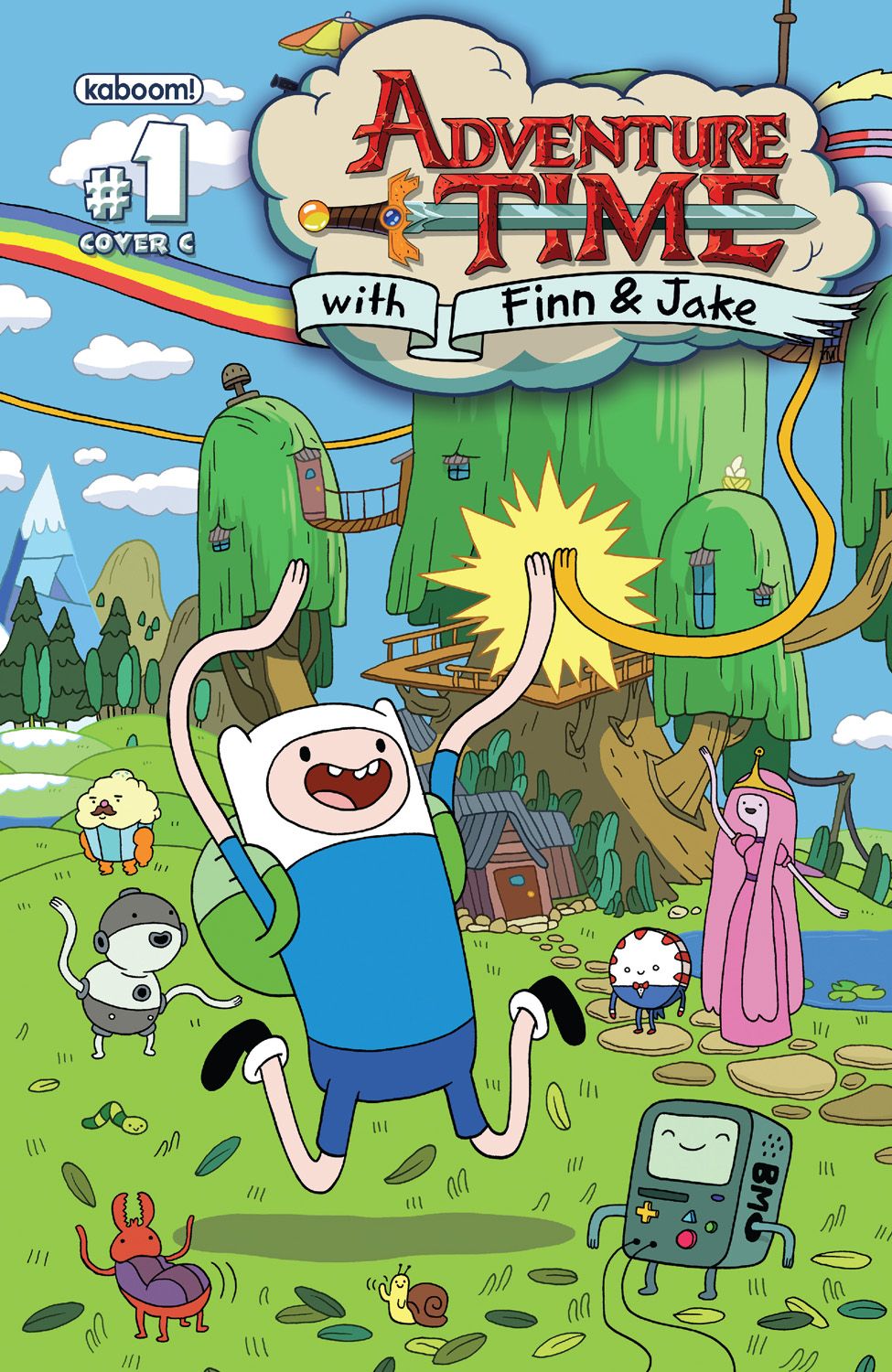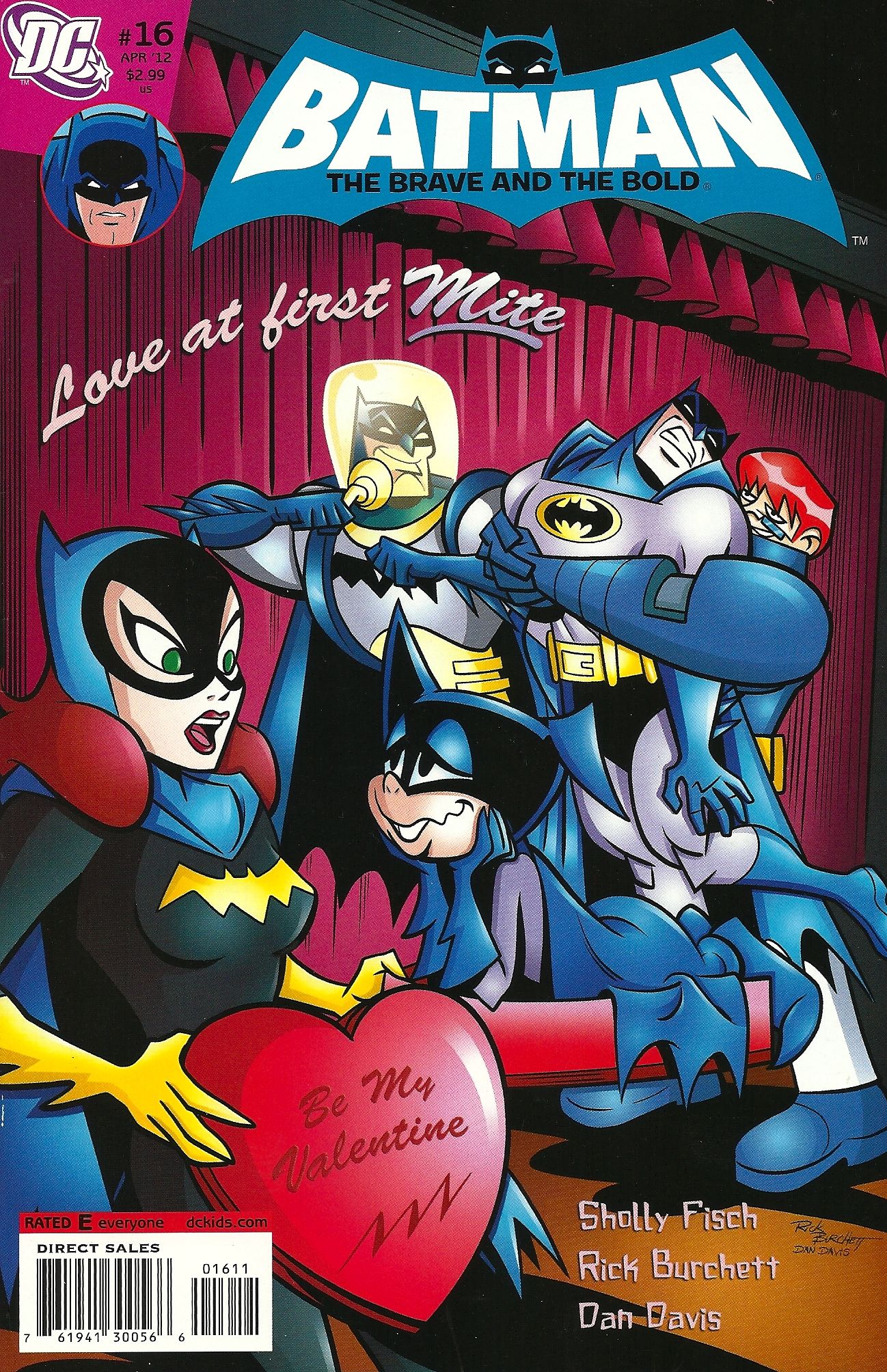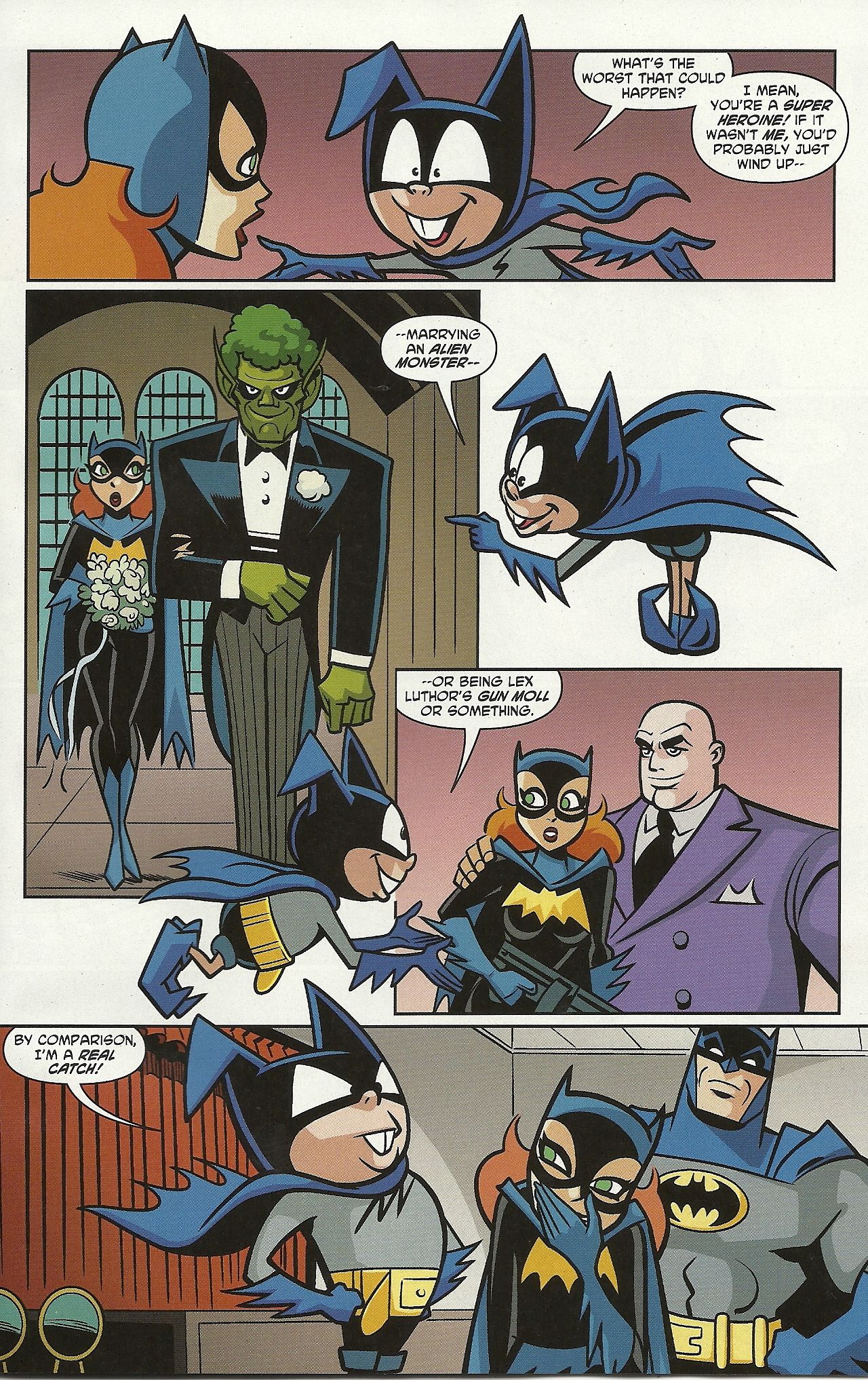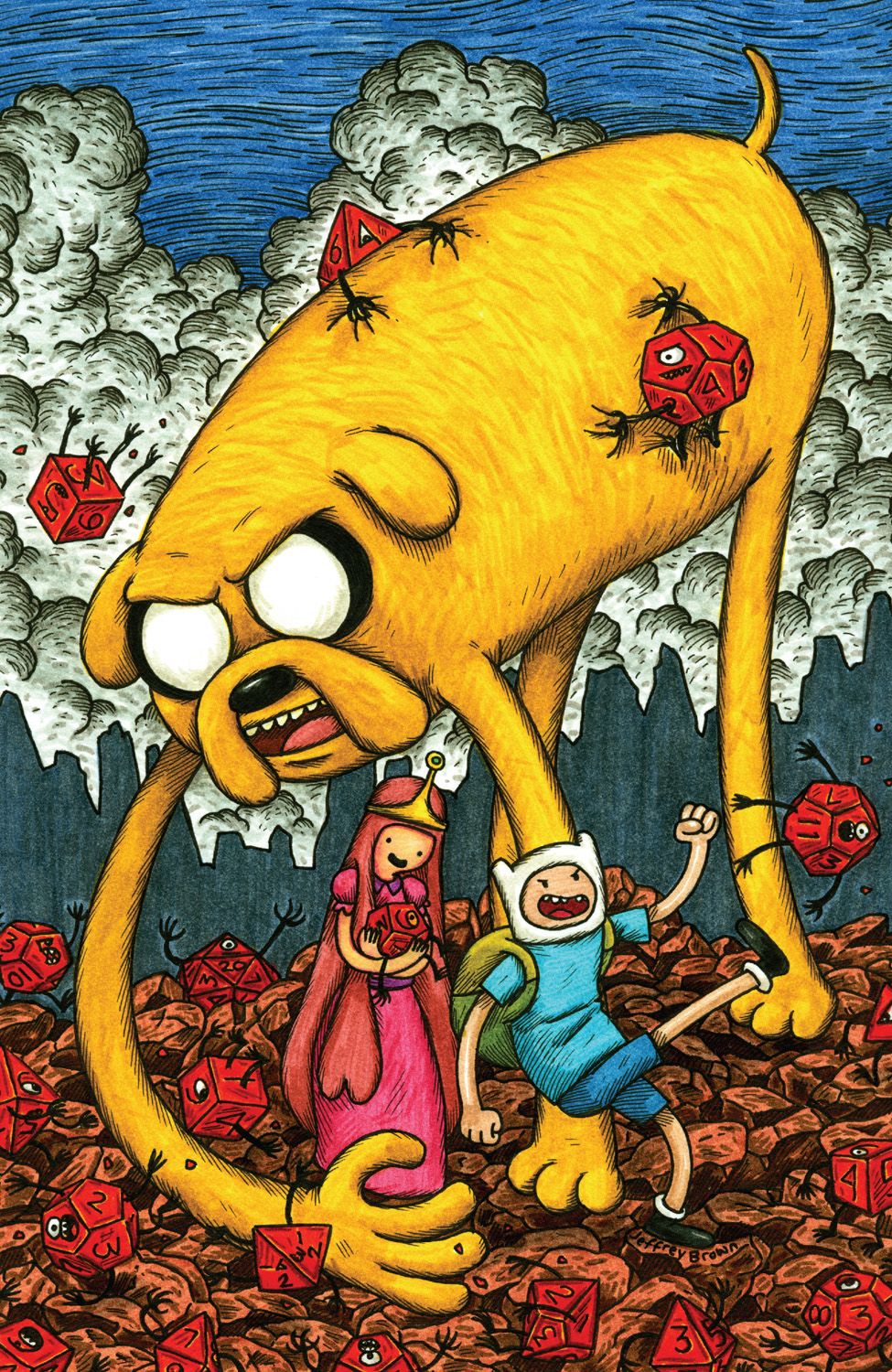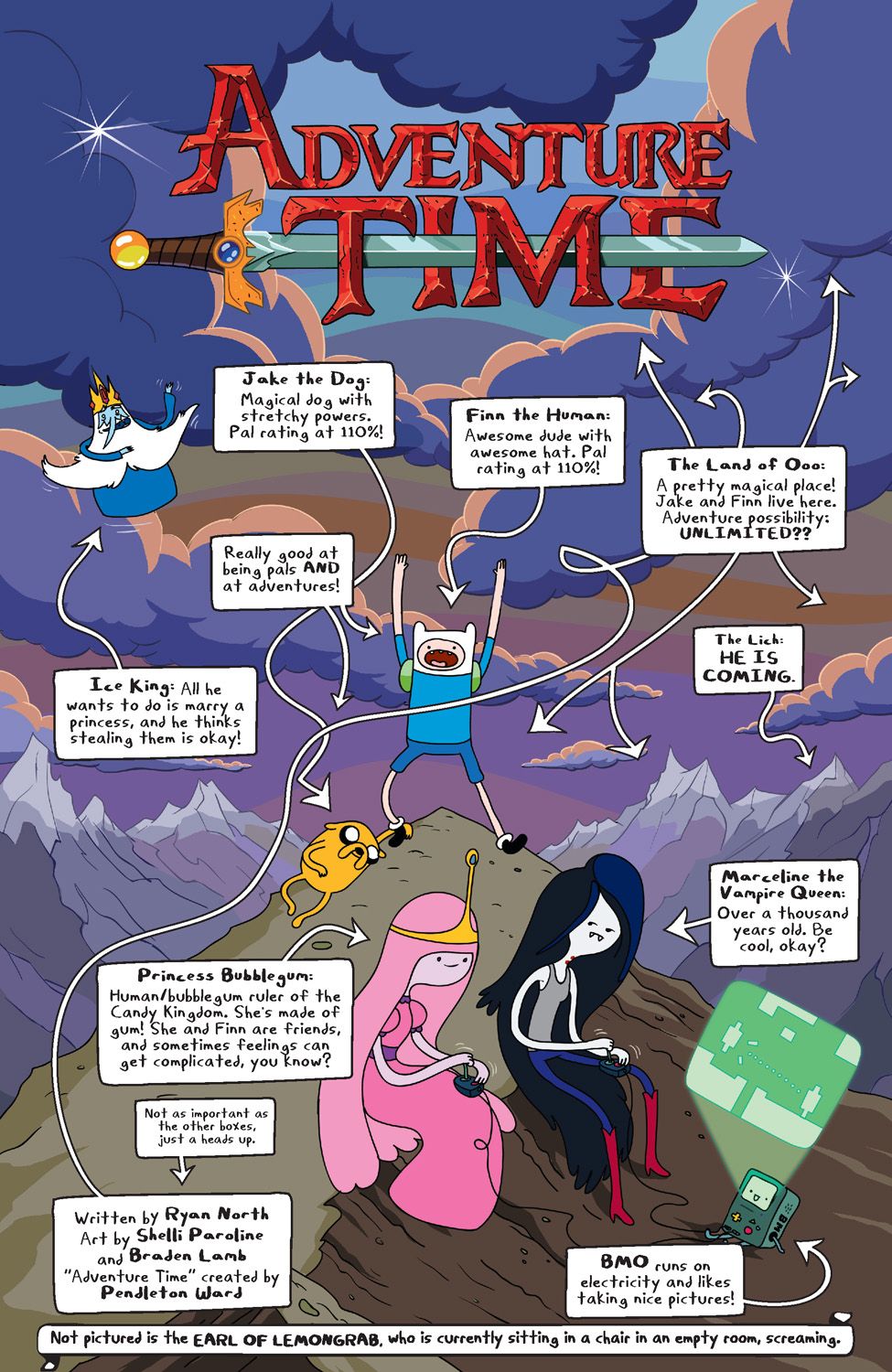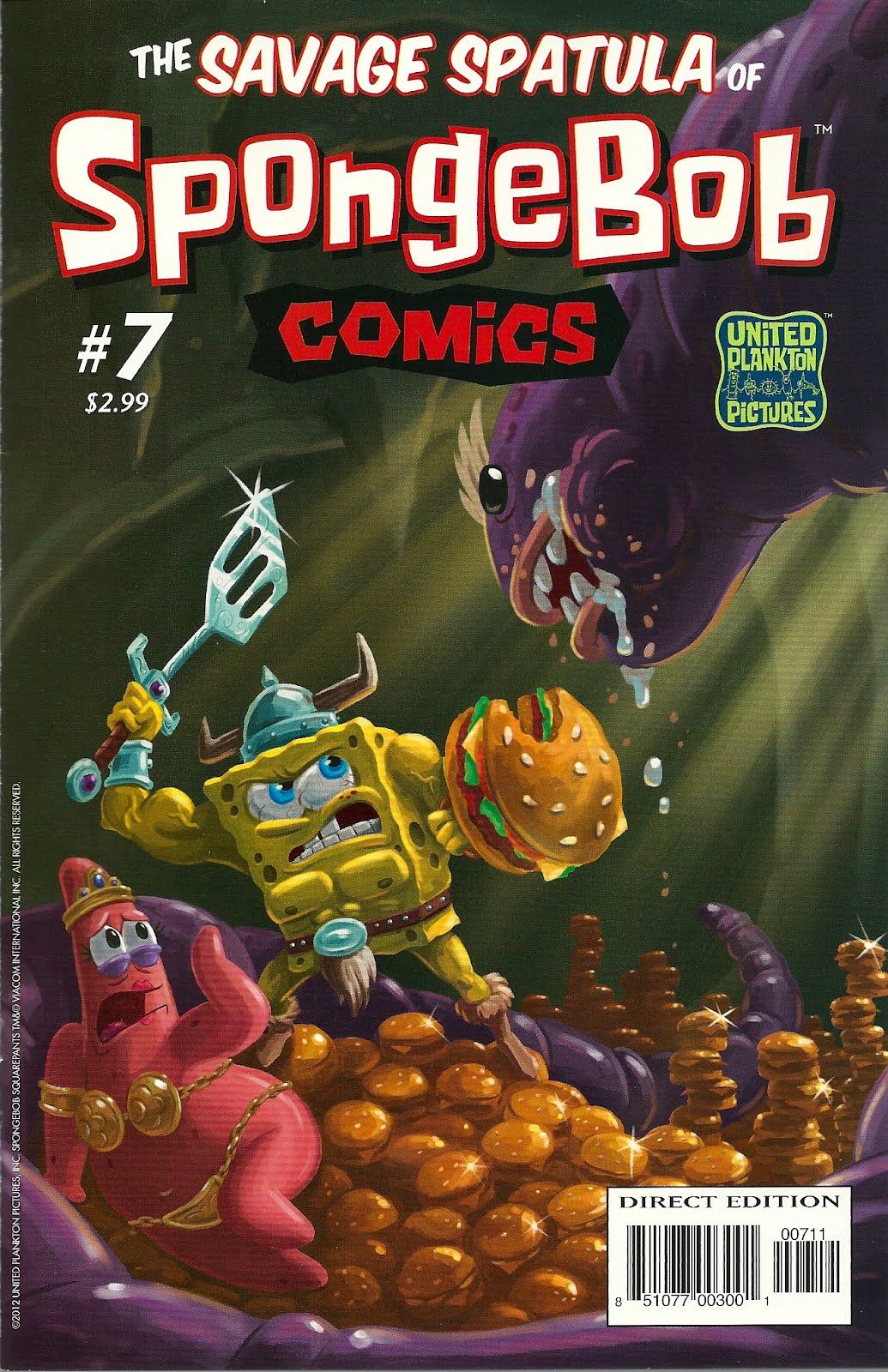You’ve heard it said that children are the future, and if that’s true—and it must be, since they’ll be around for more of the future than we adults will be—it’s as true for comics as it is for whatever else people mean when they say children are the future.
So what sorts of comic books are we providing for our children, our future these days? As it turns out, some pretty good ones—hell, some pretty great ones.
This week saw the release of three particular comic books--not graphic novels or tankobon, but good-old-fashioned 20-some pages and some staples comic books—that featured superior writing and art, some of that art coming from world-class cartoonists.
And all three of those comics, oddly enough, are based on cartoon series.
When I was a child, there were comic books based on cartoons (cartoons that were often based on toy lines), and while they were readily available in drug and grocery stores, and you could buy one with a dollar bill and get change back, they weren’t exactly the highest quality product.
But some of today’s based-on-cartoons comics can put to shame much of what the "Big Six" direct market publishers release for their grown-up audiences.
Take Batman: The Brave and The Bold #16, for example. Writer Sholly Fisch and artists Rick Burchett and Dan Davis have been producing but one of the five, ongoing monthly titles with the name “Batman” in the logo (if you expand the definition of Batman comics to include those starring his many sidekicks and villains, the Batman line composes the greatest majority of DC’s “New 52” imprint). Theirs is also the only one you can hand to anyone, regardless of age, to enjoy, and the only one that regularly features done-in-one, complete stories where prior knowledge of previous issues or Batman history is rewarded but not required.
It’s rated “E for Everyone,” not “K for Kids,” and actually is for everyone.
In this issue, fashion criminal The Mad Mod (an old 1960s Teen Titans villain that was reinvented for the 2003-2008 Teen Titans cartoon) and his gang steal Batman’s various specialty suits (many recognizable from Silver Age covers, toy lines and/or episodes of the cartoon), which he was displaying during Gotham Fashion Week, and then they don the gimmick-laden gear to attack him with.
This draws the attention of Batgirl and Bat-Mite, and the latter begins courting the former with his magical powers, causing comedic chaos.
Like each issue, it works quite well as a straight-ahead comedy adventure, but it is positively laced with allusions to obscure bits of Batman and comic history, which devoted fans will notice and, I imagine, be delighted in.
The care and craft that goes into Burchett’s art has always been one of the book’s chief pleasures for me (as I've stated often...perhaps so often some of you are sick of hearing me go on about it). As someone who enjoys looking at and dissecting art, it’s fun to see an artist draw his version of a character designed for an animated series, which in turn is based on a classic comic book artist. And Burchett usually draws the characters in the scripts to resemble the work of their creators or the artists they’re most associated with, so we’ll see a C.C. Beck Captain Marvel and a Mac Raboy Captain Marvel Jr. sharing space with a Dick Sprang-by-way-of-cartoon Batman.
Here it’s a Brave and The Bold-style Batman, with a Teen Titans-style Mad Mod, a Bruce Timm-style Batgirl and a Sheldon Moldoff-style Bat-Mite.
Bat-Mite’s reality-warping, fourth wall-breaking powers also offer up some surprisingly sharp and incise meta-textual criticism. I don’t know how intentional Fisch’s take on women in superhero comics is in this story, but there’s a telling page where Bat-Mite offers her the co-starring role in a Bat-Mite/Batgirl comic book because, without him, her options as a female character are fairly limited:
If this weren’t rated “E for Everyone,” it wouldn’t take much imagination to see a few more options, one of which might include a refrigerator. (His next attempt, by the way, is to drop her from a great height so that he can rescue her, since that’s how Superman won Lois Lane’s heart).
Sadly, this is the very last issue of Batman: The Brave and The Bold, leaving the new comics racks without a Batman comic book a kid can read without fear of seeing, say, The Joker’s flayed-off face nailed to a wall. Surely another one will come along eventually, but it’s a strange hole for DC to leave in its publishing strategy.
The same day that great comic shipped its last issue, another shipped its first issue: BOOM! Studio’s Kaboom imprint launched Adventure Time, a new series based on the popular cartoon.
This one is written by Ryan North, the cartoonist responsible for Dinosaur Comics, one of the best of the funny webcomics, and drawn by Shelli Paroline and Braden Lamb, in a style that seems to match that of the show, while working well in static form. It also features a back-up strip by Aaron Renier, responsible for 2005’s excellent Spiral-Bound and 2010’s even-better Unsinkable Walker Bean, and, among this first issue’s too-many variant covers, there’s one by indie superstar Jeffrey Brown.
I don’t have cable so I’ve never seen the show (although, on the strength of the comic, I did pick up a DVD of it from the library; Say, did you know there’s a Young Justice cartoon now? And one starring The Avengers?).
It opens with a pretty thorough explanation of the dramatis personae, which manages to be entertaining as well as informative (something the Marvel recap pages almost never pull off), which was pretty much all I needed to go on.
Some of the specifics were familiar enough from fantasy and role-playing games—a lich and a bag-of-holding figure prominently in the conflict set up in this first issue—but the main selling point was the attractively weird artwork, in which show creator’s Pendleton Ward simplified-to-abstraction characters move about in a brilliantly colored, Nintendo-esque playground world, having fun if dangerous adventures. There’s a scene where human Finn rides stretchy dog Jake, whose four legs are ridiculously elongated so that he resembles one of Salvador Dali's spindly-legged elephants, confronting a floating skeletal wizard who is sucking the world into an open sack. They begin their battle with a “battle burn,” their version of the dozens.
The friends-hanging-out-vibe juxtaposed with the surreal but mass market-friendly visuals make for quite a fun reading experience, and hey, bonus Aaron Renier. And next issue will feature a strip by Lucy Knisley!
Such talented all-ages and indie cartoonists are a regular fixture in SpongeBob Comics, which shipped its seventh monthly issue this week. R. Sikoryak is a regular fixture, always illustrating the table of contests, which he turns into a comic strip featuring pirates, as is James Kochalka, who usually contributes several short, newspaper-funnies-page style strips, and does so in this issue, in addition to a longer four-page strip.
This month’s also features a longer, 10-page strip by Graham Annable (Grickle), which the painted cover alludes to.
Editor Chris Duffy and publisher/creator Stephen Hillenburg allow the artists involved a lot of slack when it comes to interpreting the characters into their styles, so that a Kochalka SpongeBob looks exactly like a Kochalka drawing, and Annable’s has the eyes, expressions, limbs and movements of one of his figures, despite the great gulf in design.
Artist Jacob Chabot has the most “straight” take on the characters, his designs reflecting those of the TV show perfectly, and that provides enough of an anchor for some of the wilder interpretations in each issue.
As a child, I certainly enjoyed the issues of Marvel's Transformers and G.I. Joe comics relatives would pick up for me at the drug store occasionally—usually to help me pass the time when I was home sick from school for a few days—and I'm sure they played some small part in my becoming so interested in comics as a teenager and young adult, but my inner child is thus nevertheless jealous of today's kids, and the comics-based-on-cartoons they get.
Why, in my day we were lucky to get one excellent issue of a comic book based on a cartoon series a year. Kids today can find three in the same week!


